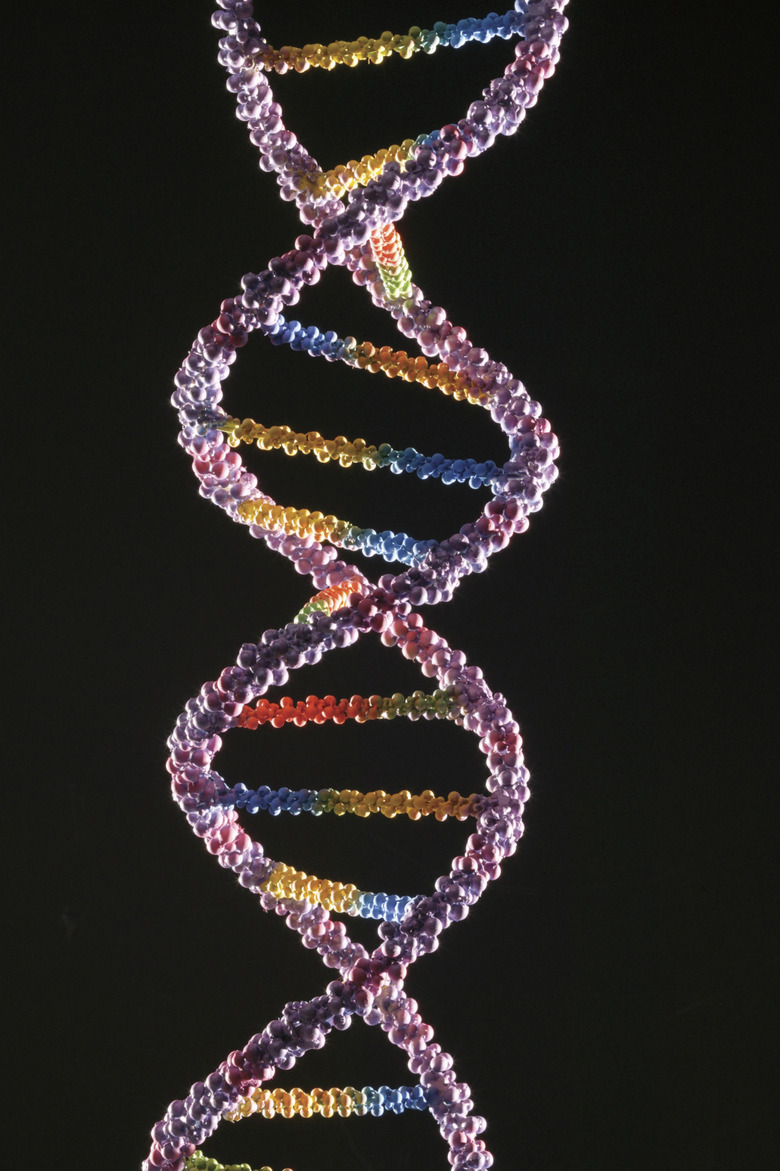What Is The Function Of The Promoter In DNA Transcription?
If you have ever taken a biology course, you probably know about DNA. These molecules contain the information necessary to create every part of any given biological organism, from the single-celled amoeba to highly complex organisms such as mammals. However, cells don't need to use the entirety of this information at once. Consequently, molecular components called promoters help initiate a process known as transcription.
DNA
DNA
Deoxyribonucleic acid encodes the blueprint for an organism within the sequencing of the strands of nucelotides which compose the DNA's ubiquitous, double helix structure. Different sequences of these nucleotides form discrete genes, which are the functional units of the code of the organism. Every cell in the body contains a complete set of DNA, which it references whenever it needs to build, or rebuild, part of itself.
Transcription
Transcription
Cells within higher level organisms (such as human beings) are highly specialized: A muscle cell serves a much different function, and consequently has a much different structure, than a nerve cell. This means cells only need access to those portions of the DNA code that specifically deal with the cell's function. Additionally, as cells only have one copy of its parent organism's DNA, the copy is secured deep within the nucleus. Consequently, when a cell needs to use part of the DNA code, it makes a copy of that code segment inside its nucleus to use outside the nucleus. This process is called transcription.
RNA
RNA
The medium that serves as the copy of the DNA code segment is called ribonucleic acid (RNA). These molecules are similar to DNA, however the ribose in RNA lacks an oxygen atom that is present in the ribose DNA uses. Additionally, RNA is usually single-stranded. These similarities allow cells to use transcriptions to "copy" the strand of nucleotides that constitute the code segment which the cell needs by creating an RNA strand consisting of these same nucleotides. The only difference, which the cell knows to adjust for, is that RNA encodes the nucleotide base thymine as uracil.
Promoters
Promoters
Promoters are DNA sequences whose purpose is not to encode information about the organism itself, but rather they serve as a kind of "On" switch to initiate the biological process of transcription for the genes which follow the promoter DNA sequence. The enzyme, RNA polymerase, which performs the transcription process, binds to the promoter sequence and then beings to work its way down the DNA segment, constructing RNA to match the DNA nucleotides over which the enzyme passes.
Cite This Article
MLA
McDunnigan, Micah. "What Is The Function Of The Promoter In DNA Transcription?" sciencing.com, https://www.sciencing.com/function-promoter-dna-transcription-12027441/. 24 April 2017.
APA
McDunnigan, Micah. (2017, April 24). What Is The Function Of The Promoter In DNA Transcription?. sciencing.com. Retrieved from https://www.sciencing.com/function-promoter-dna-transcription-12027441/
Chicago
McDunnigan, Micah. What Is The Function Of The Promoter In DNA Transcription? last modified August 30, 2022. https://www.sciencing.com/function-promoter-dna-transcription-12027441/
